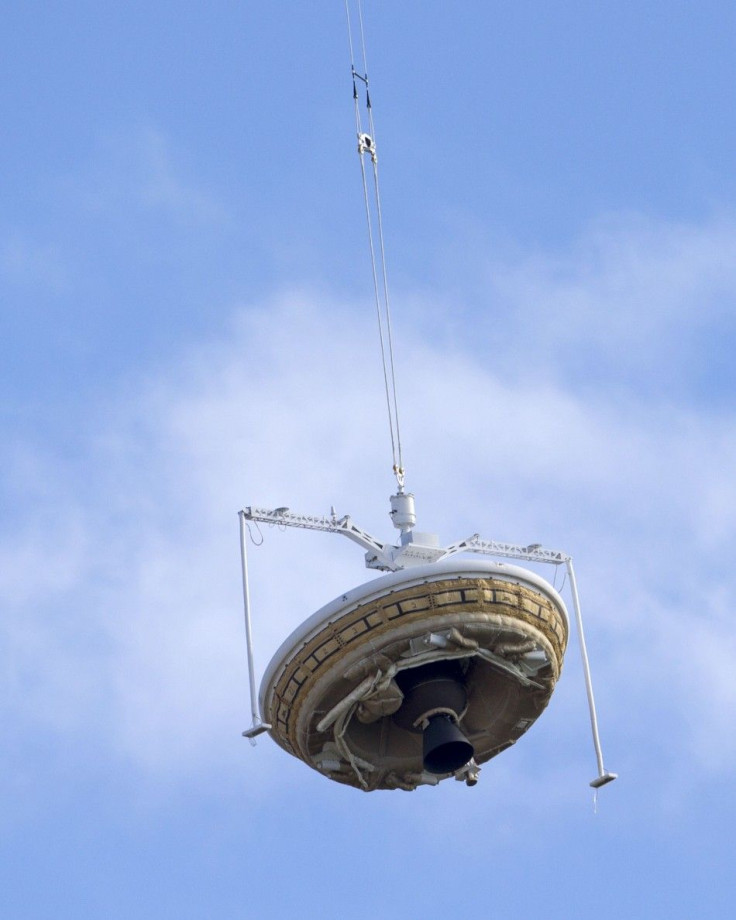NASA Test Launches Huge Balloon Carrying Saucer-Shaped Prototype Spacecraft for Mars Landing

Buoyed by a large helium balloon, NASA floated a saucer-shaped, UFO-like prototype spacecraft off a launch tower at the U.S. Navy's Pacific Missile Facility in Kauai, Hawaii on Saturday, June 28, 2014, to test the landing systems for future manned mission to Mars.
Approximately 2.5 hours after its take-off, NASA Television live broadcast showed success in the test launch as the huge balloon, carrying the saucer-shaped prototype, reached its designated altitude of 120,000 feet (36,576 metres) above the Pacific Ocean.
The saucer-shaped, UFO-like prototype or the Low Density Supersonic Decelerator (LDSD), is said to have successfully separated from the massive balloon reportedly twice as huge as the parachute used to carry the Mars Curiosity Rover through the Martian atmosphere in 2011.
The LDSD has reportedly fired up its rocket motor, reaching a supersonic speed of 3,000 mph (4,828 kilometres per hour), which is roughly four times the speed of sound.
The test launch, according to reports, has been delayed six times due to the weather, particularly high winds, before the successful test launch on June 28 for future Mars landing.
A glitch didn't go unnoticed, though, when the huge parachute is confirmed by engineers to have failed to inflate properly as it directs the UFO-like spacecraft to its destination. Yet NASA engineer Dan Coatta of Jet Propulsion Laboratory (JPL) in Pasadena, California, revealed in a statement that the test has been "good".
In a previous interview with The Guardian, NASA's chief scientist, Ellen Stofan, reveals plans of colonising Mars, addressing the new "step-wise approach" of NASA.
"We want to test them [technology for future manned mission to Mars] here where it's cheaper before we send it to Mars to make sure that it's going to work there," project manager Mark Adler of the NASA Jet Propulsion Laboratory said in a statement during a news conference in early June before the test launch.
According to various reports, the space agency is spending an estimated amount of $200 million (USD) on the five-year project that will enable humans to land safely on the Red Planet, Mars.
But before any future Mars landing with humans, a student-led, crowd-funded and NASA-supported project called "Time Capsule to Mars" is already set to travel through the Martian atmosphere. The mission, if successful, is expected to contain bits of life, particularly photos, audio, video and text from humans on Earth to Mars.





















